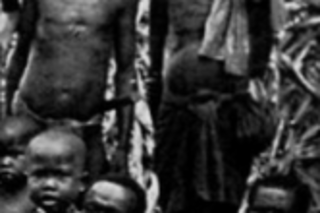A few days ago Dienekes pointed to a paper which reports on the presence of anatomically modern humans in China 80-100,000 years before the present. I say "anatomically modern" because there is a presumable distinction between populations which resemble moderns in their gross morphology, which first emerged in southern and eastern Africa 100 to 200 thousand years ago (and were dominant all across the world after 40,000 years before the present), and "behaviorally modern" societies, which exhibit all the hallmarks of protean symbolic cultural expression that are the hallmarks of humanity. The paper reporting on such old specimens is not particularly revolutionary. Rather, it's part of a growing corpus which contributes to a "counter-narrative" to the dominant model, whereby behaviorally modern humans swept across Eurasia (and Australia) ~50,000 years B.P. after the "Out of Africa" event. Obviously the problem here is that if there were anatomically modern humans in China ...
Where the oldest of the old are no more, and are
Explore the origins of anatomically modern humans and their role in Southeast Asia's complex demographic shifts.

Newsletter
Sign up for our email newsletter for the latest science news
More on Discover
Stay Curious
SubscribeTo The Magazine
Save up to 40% off the cover price when you subscribe to Discover magazine.
Subscribe












